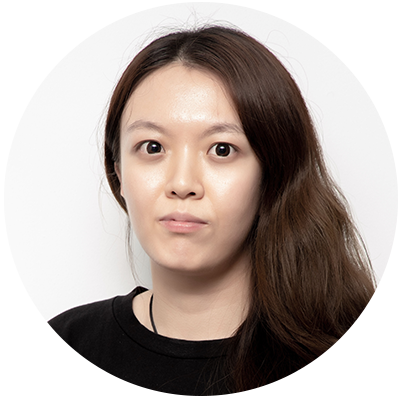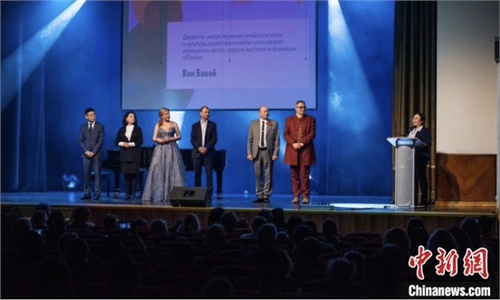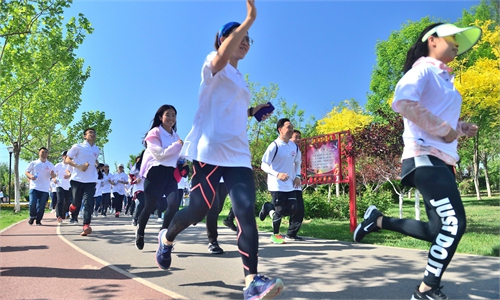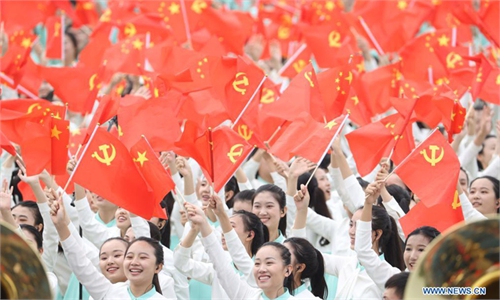Young Chinese designers of creative products bring ancient Sanxingdui culture to life
Young Chinese designers bring Sanxingdui culture to life
Editor's Note:
China's first white paper published recently on its youth describes the generation as confident, aspirant and responsible. With a global vision, they stand at the forefront of the times bursting with commitment: pursuing lofty ideals with a firm belief in socialism with Chinese characteristics; full of patriotism; displaying the sterling quality of living up to responsibilities; and striving to be pioneers in, pacesetters for and contributors to the country's development.
May 4 marks the Youth Day, which honors the patriotic youth movement - the 1919 May Fourth Movement that began 103 years ago. On this special moment when the day also marks the 100th anniversary of the founding of the Communist Youth League of China (CYLC), the Global Times presents a series of stories about four prominent figures of the young generation, who were nourished in great times with ample opportunities and have been sparing no efforts in promoting guochao, also known as Chinese trends or "China chic," on the international stage. Looking ahead to the new era, their stories fully showcase that the youth are the most active and vital force in our society, and the hope and future of a nation lie in their hands. This is the fourth part of the series in which we would like to introduce designer Feng Shixiong, founder of a studio working on designing cultural products of the Sanxingdui ruins. Feng and his young team have designed a variety of creative cultural products inspired by Sanxingdui cultural relics that have gone viral around the country.
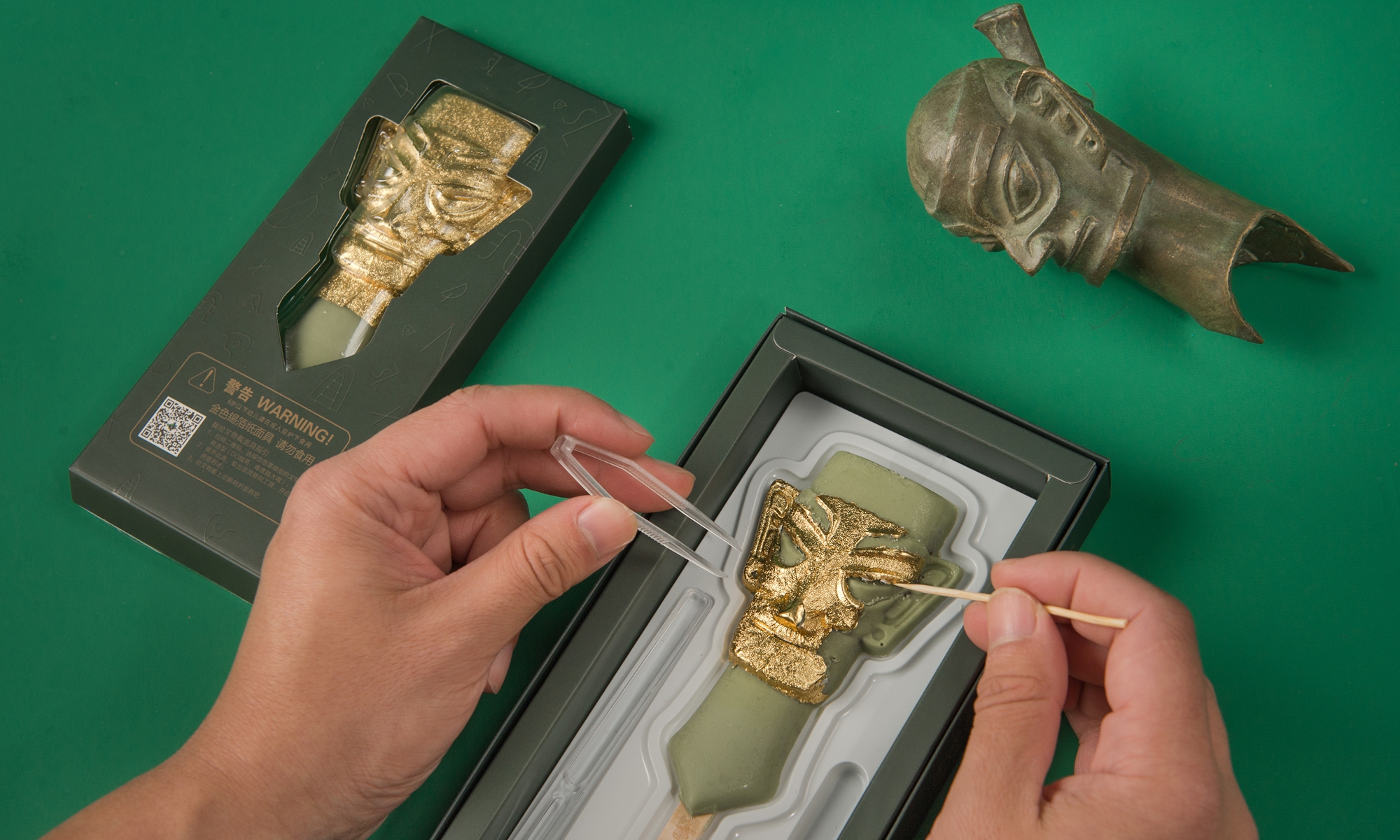
A group of designers of cultural and creative products from different cities around China, whose average age is under 28 years old, are discussing online about creative ideas on how to turn cultural relics of the Sanxingdui ruins such as the golden mask and bronze human standing statue into souvenirs or virtual cultural products to promote and revive the ancient culture.
The young team is led by Feng Shixiong, founder of a studio working on designing cultural products of Sanxingdui ruins based in Southwest China's Sichuan Province, and the youngest member is just 24 years old.
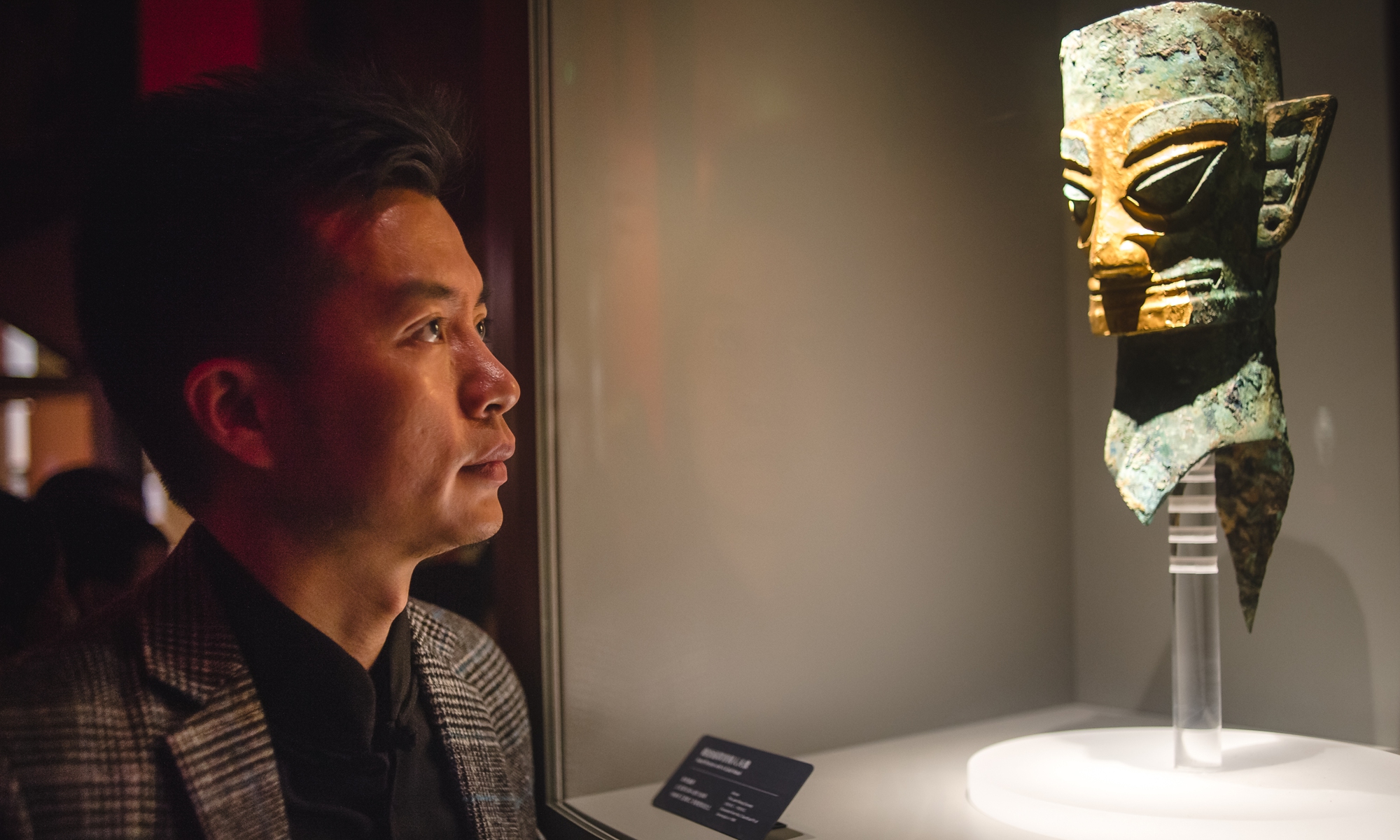
Feng told the Global Times that young designers are more open and creative and are willing to try new things. "Sanxingdui culture is popular among young people now and those who know about the youth the best are themselves," he said.
The biggest feature of Sanxingdui culture is that it is mysterious and has no written records, so it is difficult to find the cultural core and requires lots of efforts and creativity when creating new cultural products, Feng noted. Luckily, these young designers are good at accepting and using new concepts fast and can fully use their imagination in creating Sanxingdui cultural products.
Through endeavors of Feng and other young designers, Sanxingdui cultural products that have stepped in the daily life do not just have influence domestically, but are also enriching foreign people's understanding of the ancient Chinese culture.
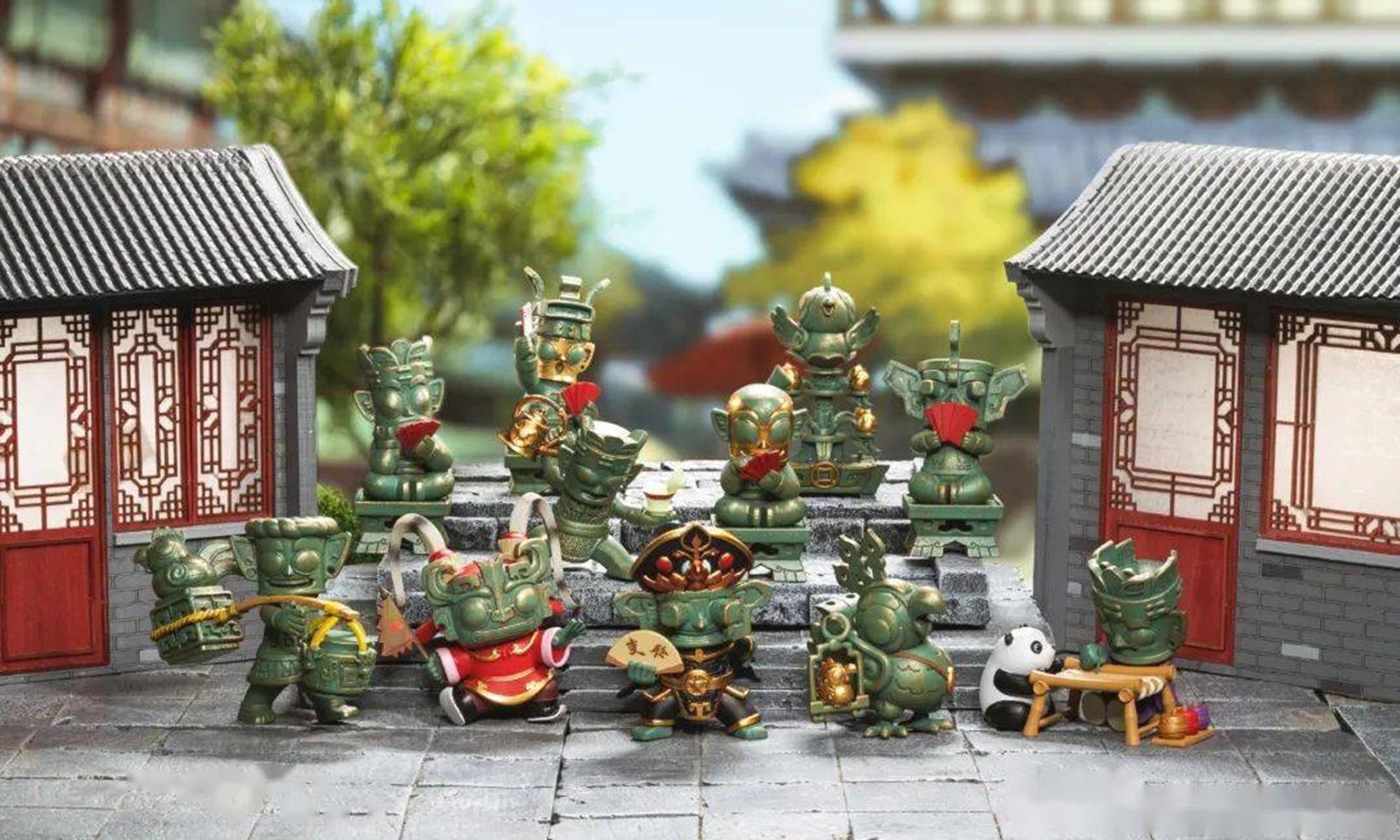
Young power
Feng went to the Sanxingdui Museum for the first time when he was a university student. He was shocked by the giant bronze masks and bronze tree statue with mysterious shapes and was proud that such splendid culture of the ancient Shu kingdom had been discovered in his hometown.
Feng's connection with Sanxingdui ruins started from becoming an interior designer and providing service for the Sanxingdui Museum.
In 2016, the museum held a designing competition on cultural products about Sanxingdui cultural relics and invited designers from around the country. Feng and his team accepted invitation and finally got the first-class award.
Feng said that he made friends with many young designers at that time and when talking with these young people, he found they have so many brilliant ideas on creating Sanxingdui cultural products.
"A thought suddenly flashed to me, 'Why don't we keep such a good designer resource? Isn't this group of designers who love Sanxingdui culture the tinder to strengthen promoting Sanxingdui culture?' Then I sought help from the Sanxingdui Museum and they were also interested in the idea," Feng said.
The studio gathered designers from different places including Beijing, Shanghai and Guangzhou, and some were fresh university graduates.
Feng often organizes young designers to discuss creative ideas online. In 2018, they launched a set of emoji based on the image of bronze masks excavated from Sanxingdui ruins and matching Sichuan dialect to connect the ancient Shu kingdom with modern culture.
The set of emoji has been downloaded more than 2.8 million times after being released on Chinese social media platform WeChat and was the first well-known work of the studio.
"In our view, designer of creative cultural products is not only a profession, but we also consider ourselves as guardians and inheritors of Chinese culture. The senses of honor and mission drive us to make unremitting efforts to promote Sanxingdui culture and convey the new Chinese fashion to the world, showing our cultural self-confidence," Feng noted.
Bring relics to life
"The continuous excavation of cultural relics in Sanxingdui ruins is like opening unknown boxes. Every new cultural relic unearthed is a brand-new designing material. Sanxingdui cultural product design has continuous increments and infinite possibilities," Feng told the Global Times.
Feng and his young team are trying to explore more meanings behind the cultural relics of Sanxingdui and then transfer them into products that can capture people's attention.
Feng said that when 2021's Mid-Autumn Festival was approaching, they began to think about how to combine the traditions of the festival with Sanxingdui cultural relics and figured out a kind of mooncake inspired by the bronze tree-shape statue and worship culture of ancient Shu kingdom.
The packaging shape of the mooncake is a platform for offering sacrifices to the moon, simulating the ancient Shu people's offerings to the moon, adding a new sense of festive ritual to the Mid-Autumn Festival.
The youngest member Lin who was born in 1998 also joined in designing the product. Feng said Lin often has a unique way of thinking about the development of Sanxingdui cultural and creative products. Lin can find needs and inspiration from the details of life, and is also very conscientious and dedicated to Sanxingdui culture.
"We welcome more young people to join our team, together designing more brilliant cultural products hailed by the market to revive the Sanxingdui culture with reverence for the ancient culture," Feng noted.
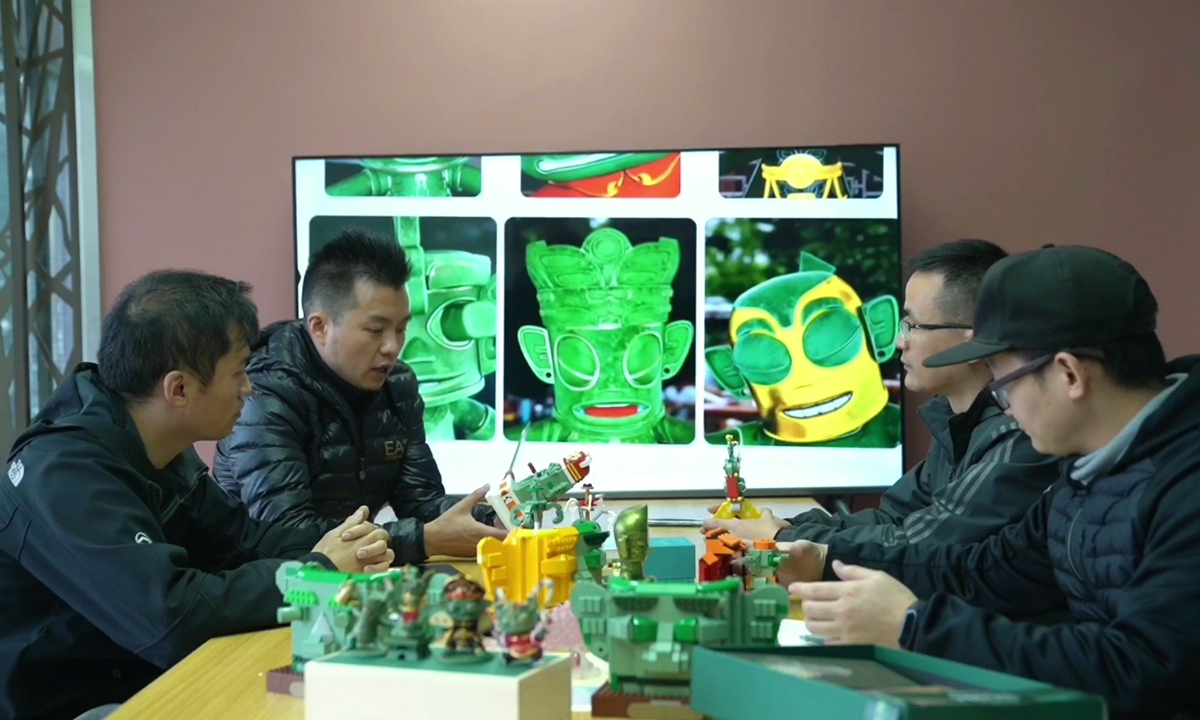
China's first white paper published recently on its youth describes the generation as confident, aspirant and responsible. With a global vision, they stand at the forefront of the times bursting with commitment: pursuing lofty ideals with a firm belief in socialism with Chinese characteristics; full of patriotism; displaying the sterling quality of living up to responsibilities; and striving to be pioneers in, pacesetters for and contributors to the country's development.
May 4 marks the Youth Day, which honors the patriotic youth movement - the 1919 May Fourth Movement that began 103 years ago. On this special moment when the day also marks the 100th anniversary of the founding of the Communist Youth League of China (CYLC), the Global Times presents a series of stories about four prominent figures of the young generation, who were nourished in great times with ample opportunities and have been sparing no efforts in promoting guochao, also known as Chinese trends or "China chic," on the international stage. Looking ahead to the new era, their stories fully showcase that the youth are the most active and vital force in our society, and the hope and future of a nation lie in their hands. This is the fourth part of the series in which we would like to introduce designer Feng Shixiong, founder of a studio working on designing cultural products of the Sanxingdui ruins. Feng and his young team have designed a variety of creative cultural products inspired by Sanxingdui cultural relics that have gone viral around the country.

Photo: Souvenirs of cultural relics of the Sanxingdui ruins such as the golden mask and bronze human standing statue
A group of designers of cultural and creative products from different cities around China, whose average age is under 28 years old, are discussing online about creative ideas on how to turn cultural relics of the Sanxingdui ruins such as the golden mask and bronze human standing statue into souvenirs or virtual cultural products to promote and revive the ancient culture.
The young team is led by Feng Shixiong, founder of a studio working on designing cultural products of Sanxingdui ruins based in Southwest China's Sichuan Province, and the youngest member is just 24 years old.

Photo: Feng Shixiong, founder of a studio working on designing cultural products of Sanxingdui ruins
Feng told the Global Times that young designers are more open and creative and are willing to try new things. "Sanxingdui culture is popular among young people now and those who know about the youth the best are themselves," he said.
The biggest feature of Sanxingdui culture is that it is mysterious and has no written records, so it is difficult to find the cultural core and requires lots of efforts and creativity when creating new cultural products, Feng noted. Luckily, these young designers are good at accepting and using new concepts fast and can fully use their imagination in creating Sanxingdui cultural products.
Through endeavors of Feng and other young designers, Sanxingdui cultural products that have stepped in the daily life do not just have influence domestically, but are also enriching foreign people's understanding of the ancient Chinese culture.

Photo: Souvenirs of cultural relics of the Sanxingdui ruins such as the golden mask and bronze human standing statue
Young power
Feng went to the Sanxingdui Museum for the first time when he was a university student. He was shocked by the giant bronze masks and bronze tree statue with mysterious shapes and was proud that such splendid culture of the ancient Shu kingdom had been discovered in his hometown.
Feng's connection with Sanxingdui ruins started from becoming an interior designer and providing service for the Sanxingdui Museum.
In 2016, the museum held a designing competition on cultural products about Sanxingdui cultural relics and invited designers from around the country. Feng and his team accepted invitation and finally got the first-class award.
Feng said that he made friends with many young designers at that time and when talking with these young people, he found they have so many brilliant ideas on creating Sanxingdui cultural products.
"A thought suddenly flashed to me, 'Why don't we keep such a good designer resource? Isn't this group of designers who love Sanxingdui culture the tinder to strengthen promoting Sanxingdui culture?' Then I sought help from the Sanxingdui Museum and they were also interested in the idea," Feng said.
The studio gathered designers from different places including Beijing, Shanghai and Guangzhou, and some were fresh university graduates.
Feng often organizes young designers to discuss creative ideas online. In 2018, they launched a set of emoji based on the image of bronze masks excavated from Sanxingdui ruins and matching Sichuan dialect to connect the ancient Shu kingdom with modern culture.
The set of emoji has been downloaded more than 2.8 million times after being released on Chinese social media platform WeChat and was the first well-known work of the studio.
"In our view, designer of creative cultural products is not only a profession, but we also consider ourselves as guardians and inheritors of Chinese culture. The senses of honor and mission drive us to make unremitting efforts to promote Sanxingdui culture and convey the new Chinese fashion to the world, showing our cultural self-confidence," Feng noted.
Bring relics to life
"The continuous excavation of cultural relics in Sanxingdui ruins is like opening unknown boxes. Every new cultural relic unearthed is a brand-new designing material. Sanxingdui cultural product design has continuous increments and infinite possibilities," Feng told the Global Times.
Feng and his young team are trying to explore more meanings behind the cultural relics of Sanxingdui and then transfer them into products that can capture people's attention.
Feng said that when 2021's Mid-Autumn Festival was approaching, they began to think about how to combine the traditions of the festival with Sanxingdui cultural relics and figured out a kind of mooncake inspired by the bronze tree-shape statue and worship culture of ancient Shu kingdom.
The packaging shape of the mooncake is a platform for offering sacrifices to the moon, simulating the ancient Shu people's offerings to the moon, adding a new sense of festive ritual to the Mid-Autumn Festival.
The youngest member Lin who was born in 1998 also joined in designing the product. Feng said Lin often has a unique way of thinking about the development of Sanxingdui cultural and creative products. Lin can find needs and inspiration from the details of life, and is also very conscientious and dedicated to Sanxingdui culture.
"We welcome more young people to join our team, together designing more brilliant cultural products hailed by the market to revive the Sanxingdui culture with reverence for the ancient culture," Feng noted.

Feng Shixiong (second from left) and his team Photo: Courtesy of Feng Shixiong
